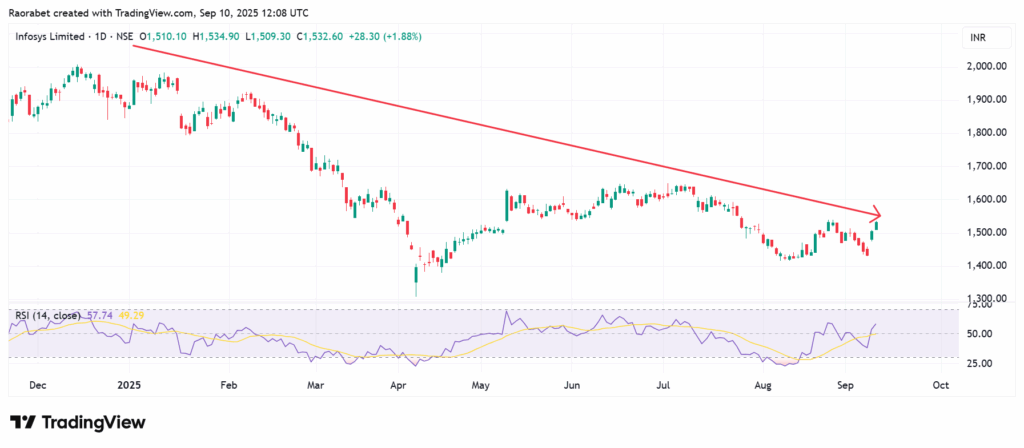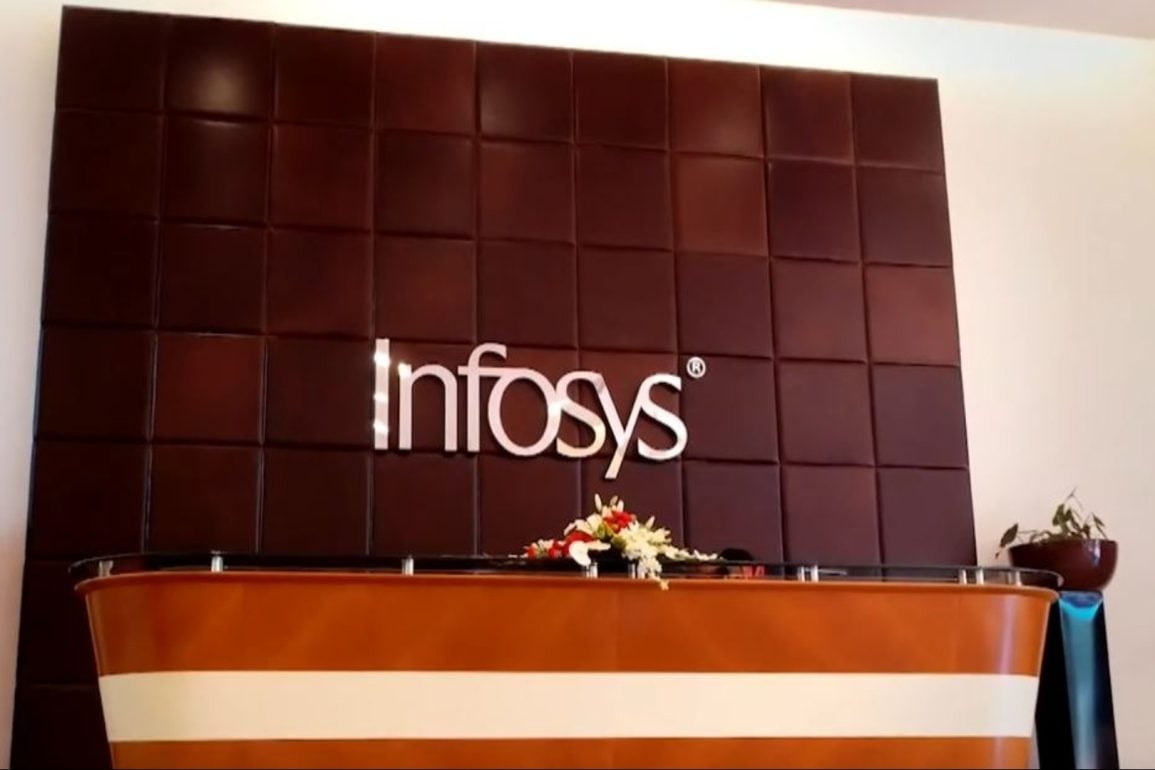Infosys Limited (NYSE: INFY), one of India’s biggest IT service companies, has had a tough year so far in 2025. The company’s American Depositary Receipts (ADRs) have dropped between 22–24% this year, which is a lot worse than the market as a whole. However, an announcement on September 8, 2025, about a possible share buyback has emboldened investors, and Infosys share price has risen 4–7% on the daily chart since then. The question is whether this strategy for returning wealth can lead to a real recovery by Infosys share price.
What Does the Infosys Buyback Proposal Entail?
A share buyback, also called a share repurchase, is when a business buys back its own shares from the open market. This lowers the number of outstanding shares, which raises some important per-share measures, like Earnings Per Share (EPS) and Return on Equity (ROE). When the number of shares goes down, the same amount of profit is split among fewer shares, which makes each share worth more in theory.
This is Infosys’s fifth buyback plan since 2017 and the first in three years. The latest move shows that the company is going back to its aggressive practices that are good for shareholders. On September 11, 2025, the board will meet to talk about the buyback, which could be worth up to ₹13,560 crore (approximately $1.6 billion). As of the first quarter of fiscal year 2026, the company’s cash reserves were ₹45,200 crore, and this might entail repurchasing 14–15% of its net worth at a 25% premium to the present market price.
For Infosys, a buyback has many benefits. First, it’s a fast way to give back money to shareholders. A buyback can be a more tax-efficient approach to reward investors than a dividend at a time when the economy is not doing well and clients are more cautious with their money. This is because a repurchase is usually taxed as a capital gain instead of regular income.
Second, it can help keep the stock price stable by setting a floor for it during times of volatility and weakness. Third, it can boost the company’s valuation indicators, which can make it more appealing to prospective investors.

Infosys stock price trajectory in 2025. Source: TradingView
Can the Buyback Trigger a Recovery?
A share buyback is a financial engineering strategy, not a way to fix the fundamental problems with the business itself. Infosys’s poor performance this year isn’t just because of the market sentiment; it’s also because investors are spending less money, especially in its main areas like North America and Europe. The company’s Q1 FY26 financial reports revealed steady growth, but not amazing growth. It got a record number of major deals, but the gain in revenue and operating profit was small.
Still, the quick reaction of the market shows that the buyback might be a catalyst. In two sessions on September 9 and 10, 2025, the Nifty IT index gained 6%, ending a five-day losing run, while Infosys shares on the BSE rose 4% intraday, from about ₹1,420 to ₹1,484. This rise is in line with a general sense of relief in the IT sector, which is being fueled by anticipation that the U.S. Federal Reserve could cut interest rates. In return, that could lower borrowing costs for clients and encourage more uptake of tech stocks.
But there are still risks. Geopolitical tensions between countries, AI-driven disruptions, and slow U.S. economic growth are still making it difficult to predict what will happen in the IT industry in the next few years.
In addition, some critics say the buyback money could be better used for acquisitions or research and development in fast-growing fields like cloud computing and AI, where Infosys is behind the world’s top companies. The arbitrage potential may not be substantial if the repurchase price premium isn’t strong enough or if investors think they can get better returns elsewhere. Additionally, momentum could be dampened if buyback expectations are delayed or diluted.
In Conclusion
Ultimately, the buyback program is likely to be a catalyst, giving the company a short-term lift and a vote of confidence that could draw in investors who have been sitting on the sidelines. But for a long-term recovery, the market will want to see proof of consistent client demand, earnings patterns that support them, and maybe more capital return or structural growth efforts.
Infosys’s stock has not done well because of challenges facing the global economy as a whole and a widespread drop in client spending, which has hurt the whole IT services sector.
No, a buyback is a short-term catalyst, but Infosys needs to keep doing well in its operations and be able to carry out its development strategy in key fields like AI for a long-term recovery.
After the buyback announcement on September 8, 2025, shares rose 4–7%, reaching ₹1,484.
This article was originally published on InvestingCube.com. Republishing without permission is prohibited.


